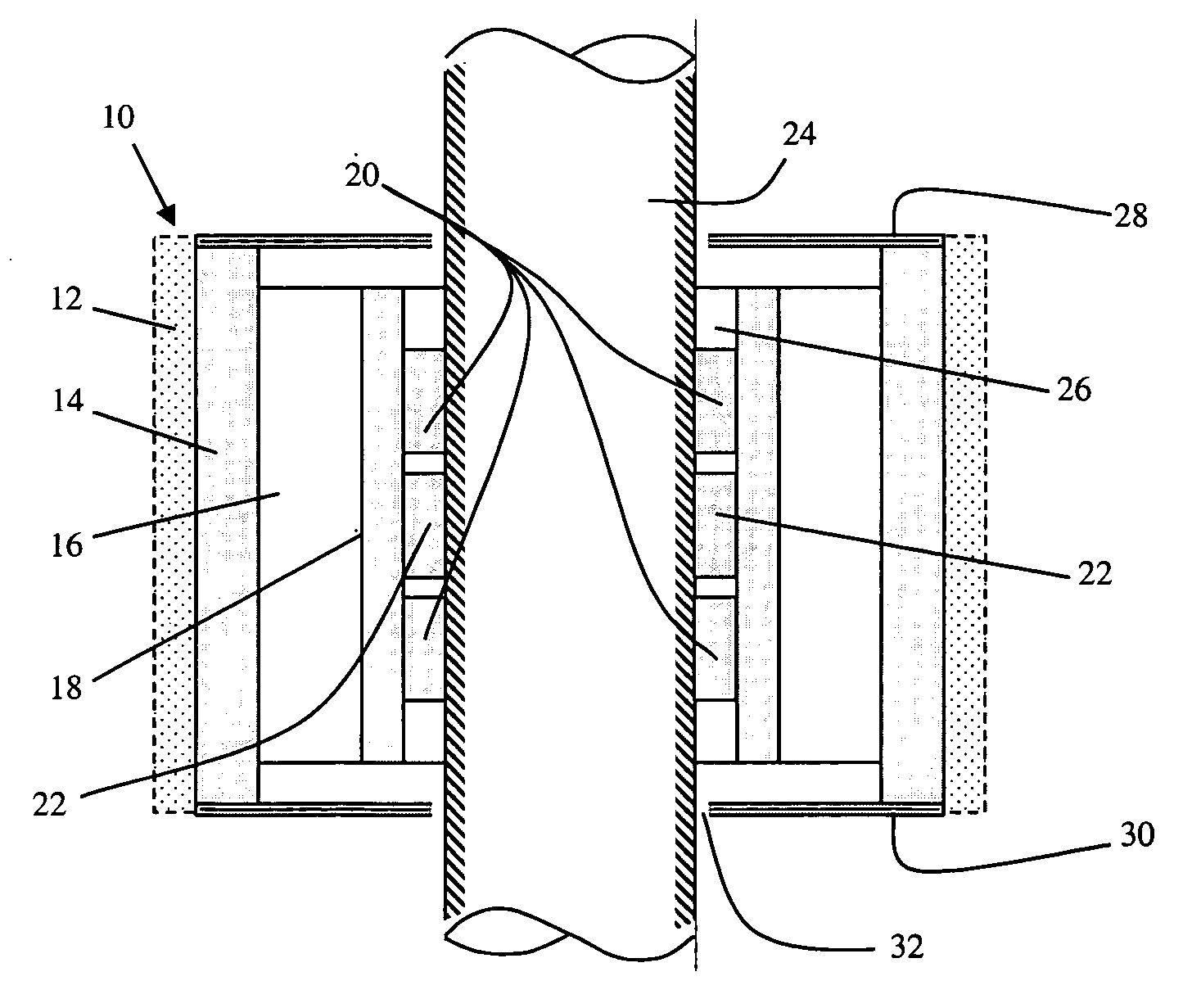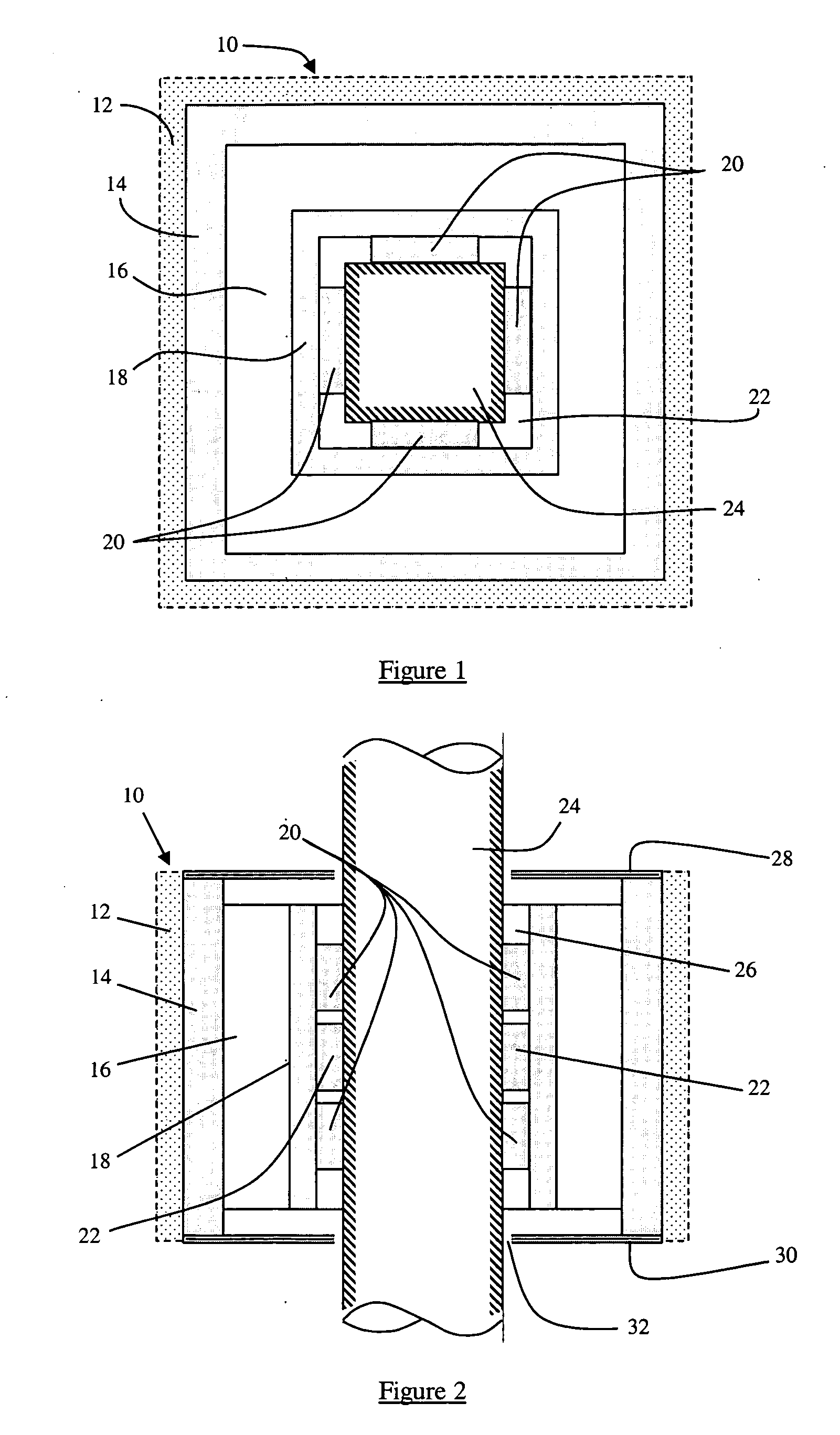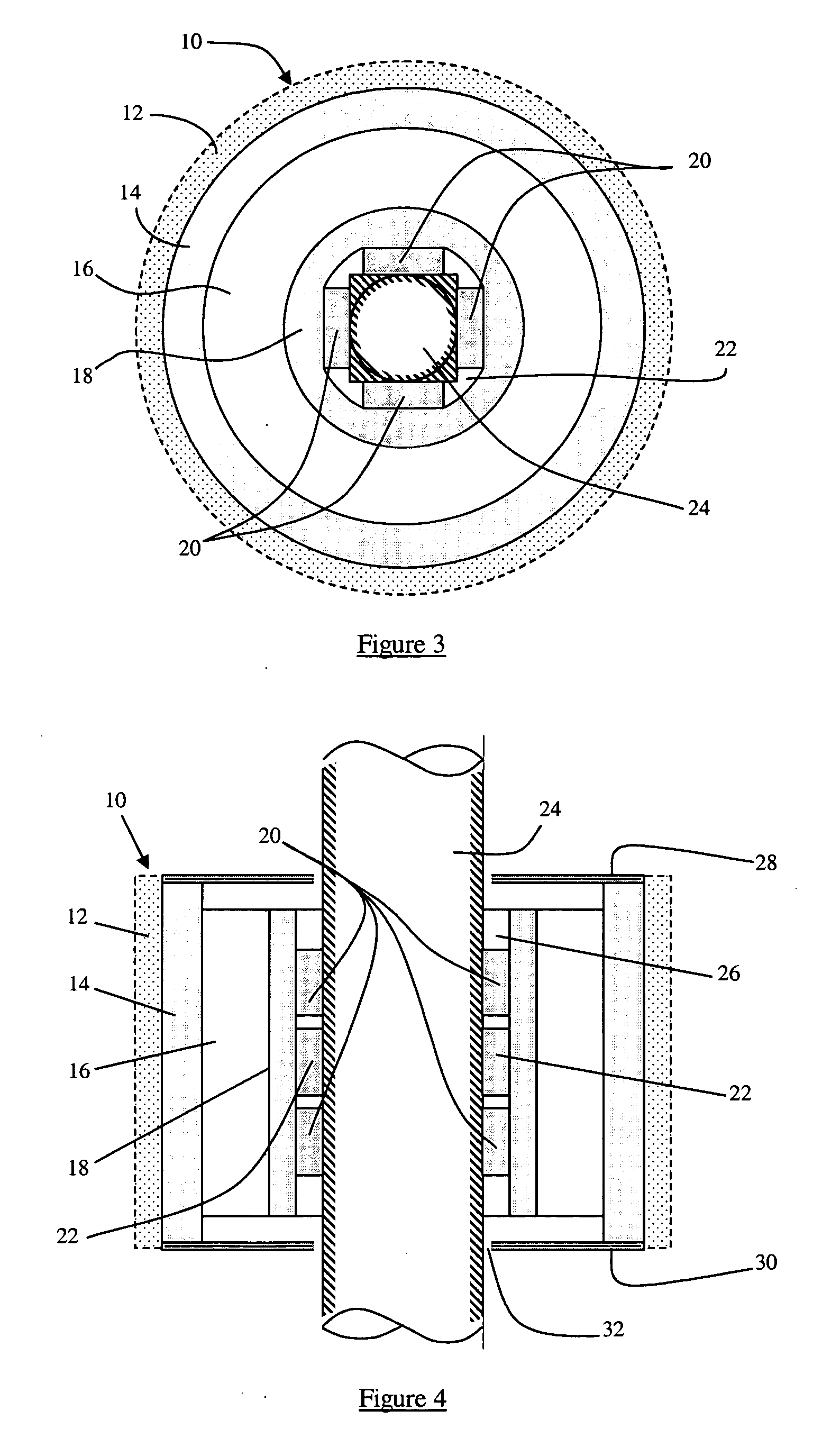Ridigly mounted underwater acoustic inertial vector sensor
a technology inertial vector sensors, which is applied in the field of underwater acoustic sensors, can solve the problems of inaccurate measurement of acoustic fields which depart from perfect plane wave behavior, decrease the dynamic range of the probe, and increase so as to reduce the scattering effect of the body and the effect of greater accuracy
- Summary
- Abstract
- Description
- Claims
- Application Information
AI Technical Summary
Benefits of technology
Problems solved by technology
Method used
Image
Examples
Embodiment Construction
[0028] A probe 10 for use underwater to measure true acoustic intensity is shown generally in FIGS. 1 and 2. The outer casing of probe 10 is preferably made neutrally buoyant, such that wave vibrations affect the probe casing 14 just as they would affect the water which probe 10 displaces. Probe casing 14 may include a syntactic foam casting 12. The cured foam can be used, trimmed or weighted to achieve neutral buoyancy, as needed. While it is preferred that the outer casing be made neutrally buoyant, embodiments of the present invention may be made without a neutrally buoyant outer casing. A compliance layer 16 separates the probe outer casing 14 from a “coupling-mass” or secondary casing 18. The compliance layer may take a variety of forms, and in this embodiment is a thin layer of compliant rubber, such as a silicon rubber. A plurality of sensor elements 20 and 22 are disposed between the inner surface of the “coupling-mass” or secondary casing 18 and a central mounting structure...
PUM
 Login to View More
Login to View More Abstract
Description
Claims
Application Information
 Login to View More
Login to View More - R&D
- Intellectual Property
- Life Sciences
- Materials
- Tech Scout
- Unparalleled Data Quality
- Higher Quality Content
- 60% Fewer Hallucinations
Browse by: Latest US Patents, China's latest patents, Technical Efficacy Thesaurus, Application Domain, Technology Topic, Popular Technical Reports.
© 2025 PatSnap. All rights reserved.Legal|Privacy policy|Modern Slavery Act Transparency Statement|Sitemap|About US| Contact US: help@patsnap.com



